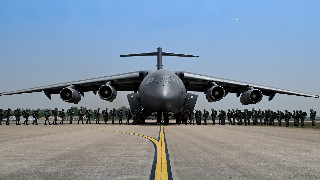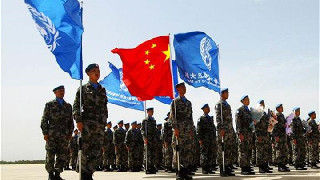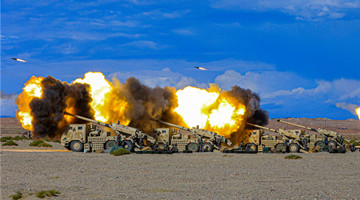
By Lin Yuan
The British government recently released a new National Strategy for Maritime Security (NSMS) report, eight years after the previous one. Some commented that Britain’s current capacity cannot sustain its ambitious maritime strategy, while others said as the country implements what’s stated in the report, the British maritime forces may come to bear on regional security.
Britain's overall strengths questioned
The UK underscored in the NSMS the importance of strongly developing its maritime combat forces and tapping the potential of maritime resources, the feasibility of which, however, is widely doubted.
On the one hand, the UK is unable to sustain its expansion strategy despite a willing heart. According to the report, Britain will build a top-grade navy, but the reality is that the Royal Navy has only a small number of vessels and submarines with limited assault capacity. The number of its vessels in service is only 18, including six Type 45 destroyers, the smallest scale in history.
The report also asked the Royal Navy to flex muscles in the Indo-Pacific and other regions, claiming the country will permanently deploy two military vessels in the Indo-Pacific and station maritime forces in the Arctic Circle to cope with regional security challenges and global warming. Foreign media estimated a 50% increase in Britain’s national defense budget in order to achieve the said goals, which is obviously unrealistic for the financially stretched British military.
On the other hand, the Royal Navy has its “favorite kids”. The sea-based nuclear deterrence capability, aircraft carrier strike capability, and amphibious strike capability are the Royal Navy’s three core combat capabilities, but it attaches more importance to the first two based on overall considerations for international security situation and military development. In recent years, the British Royal Navy has applied the “salami tactics” on its marines to scale back on the expenditure on its combat forces and amphibious assault vessels. The amphibious combat forces are not listed as a key item in the recent report either.
Future influence not to be underestimated
Generally speaking, the report sets Britain’s strategic goals and pathways in the maritime security field. As a wind vane for British maritime policy for some time to come, the report’s future influence on global maritime governance should not be underestimated. As it is acted out over time, the British Royal Navy may accelerate its development and get ready for the country to get back on the global stage and become a “global Britain”.
The Royal Navy has fast-tracked its development. Take weapons and equipment for instance, the Royal Navy plans to develop the new-generation Type 32 frigate, and the Dreadnought-class strategic nuclear submarine and a new-type nuclear warhead to replace the Vanguard-class strategic nuclear submarine and Type W76 nuclear warhead. Foreign media commented that the commissioning of two Queen Elizabeth aircraft carriers will strongly boost the ocean-going combat capability of the Royal Navy, and Britain’s maritime strategy embedded in the “global Britain” conception may very well materialize step by step.
Britain is actively expanding globally. According to comments, the report can be seen as a “trial implementation” in the field of maritime security of Global Britain in a Competitive Age—The Integrated Review of Security, Defence, Development and Foreign Policy issued in March 2021, and a systemic execution of the “global Britain” vision on national maritime security strategy. Next, the UK may, together with its traditional allies such as the US, further enhance the military operations in the Indo-Pacific and other regions, and move faster to shape a geo-security landscape in its favor through forward military deployment and enhanced combined combat force.











